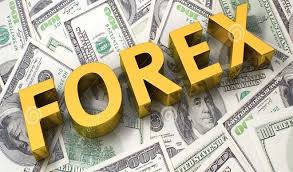In the aftermath of the dollar’s worst day in over a year, prominent investors, including T. Rowe Price and Fidelity International, suggest that it might be premature to declare the end of the dollar’s bull run. Despite the recent significant drop in Bloomberg’s gauge of the US currency, investors remain divided on the future trajectory of the dollar.
T. Rowe Price dismisses the notion of Federal Reserve rate cuts in the coming year, emphasizing the anticipated growth in the US and higher interest rates compared to other major economies as factors that could support the dollar. On the contrary, Fidelity International expresses concern that prolonged higher US interest rates could potentially lead the economy into a downturn, ultimately benefiting the US currency.
George Efstathopoulos, portfolio manager at Fidelity International in Singapore, commented, “I don’t think we can call the end of the dollar bull market,” highlighting their reduction in overall local currency exposure in alignment with this perspective.
Despite the recent setback with soft inflation data, many dollar bulls remain resilient. Hedge funds, in particular, have continued to increase long positions for eight consecutive weeks, marking the longest streak in over two years, according to Commodity Futures Trading Commission data compiled by Bloomberg.
While the current bout of dollar weakness aligns with expectations of more Fed easing, some analysts suggest that other Group-of-10 currencies could also face pressure as markets price in a dovish turn for their respective central banks. HSBC’s Charlotte Ong notes, “We maintain our view of dollar resilience as we head into 2024, especially in the face of soft global growth and relatively firm US yields.”
T. Rowe Price shares this sentiment, viewing the enthusiasm for rate cuts as misguided. Tim Murray, a capital markets strategist at the $1.31 trillion money manager, stated, “I don’t see the Fed cutting in 2024,” pointing out that a significant weakening of the dollar would require unlikely circumstances such as a sharp decline in the employment market.
However, not everyone shares the optimism about the dollar’s future. Bank of America Corp. strategists, including Alex Cohen, caution that the US currency could be “vulnerable to a quick positioning reversal” due to the perception of bullish greenback positions as one of the most crowded trades in markets. Barclays Plc, Morgan Stanley, and National Australia Bank Ltd. have also warned that bets on the greenback are becoming increasingly stretched.
Brad Bechtel, global head of foreign exchange at Jefferies LLC in New York, suggests that the market, which is currently long on USD, may experience position rebalancing, leading to a slight decrease before a potential uptrend over the medium term.
While some analysts express skepticism about the dollar’s strength, others, like Western Asset, a division of Franklin Templeton, argue that dismissing the dollar’s resilience could be a misstep. With ongoing geopolitical tensions worldwide, the US dollar’s status as the world’s reserve currency and the recognition of Treasuries as a safe-haven asset may continue to play a crucial role.
“The US dollar’s status as the world’s reserve currency, facilitating easy borrowing for the US, and the recognition of Treasuries as the world’s safe-haven asset especially in times of escalating geopolitical tensions, should dispel any doubts about the economic or financial resilience of the US,” noted Robert Abad, a product specialist at Western Asset, in a recent note.










